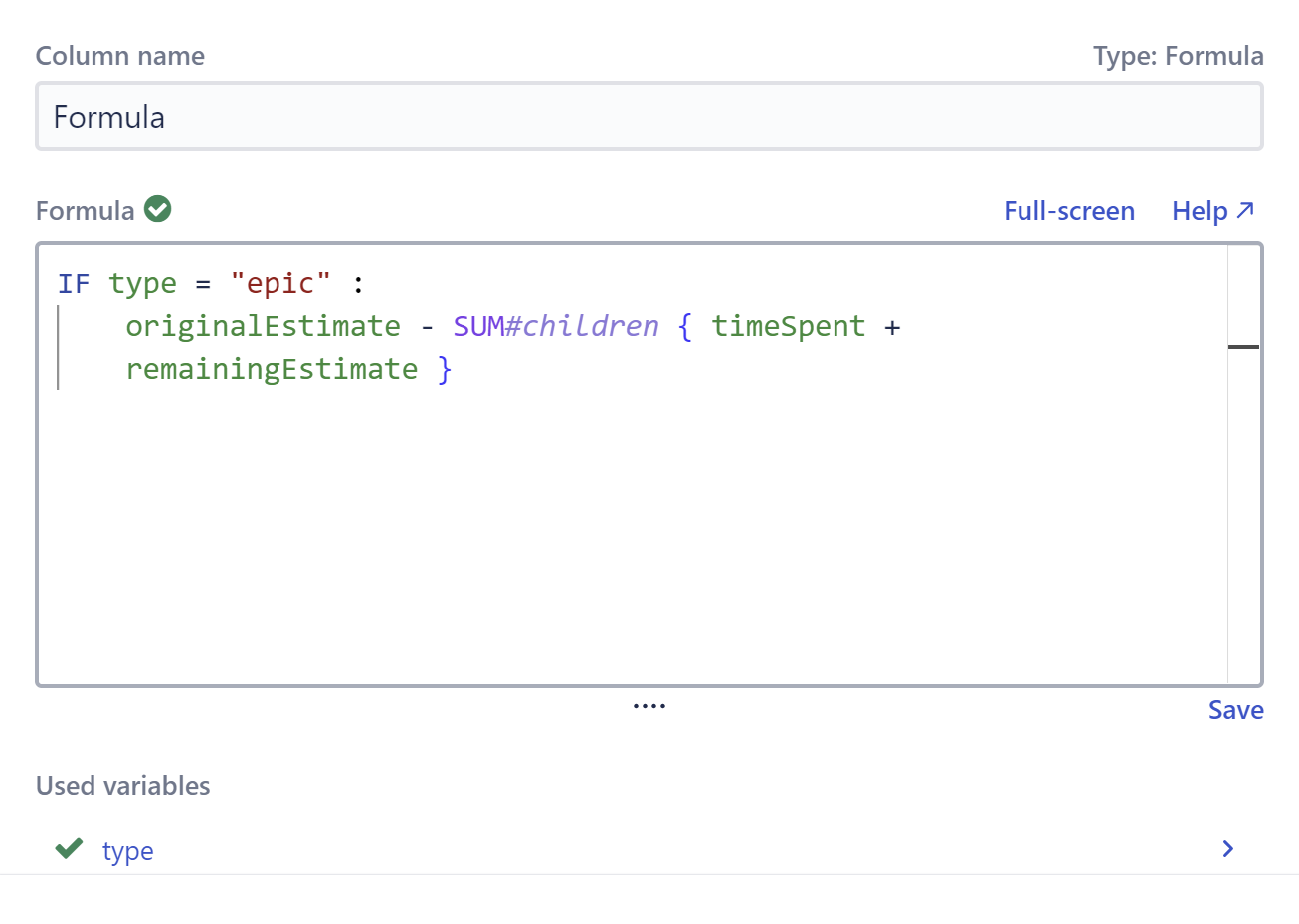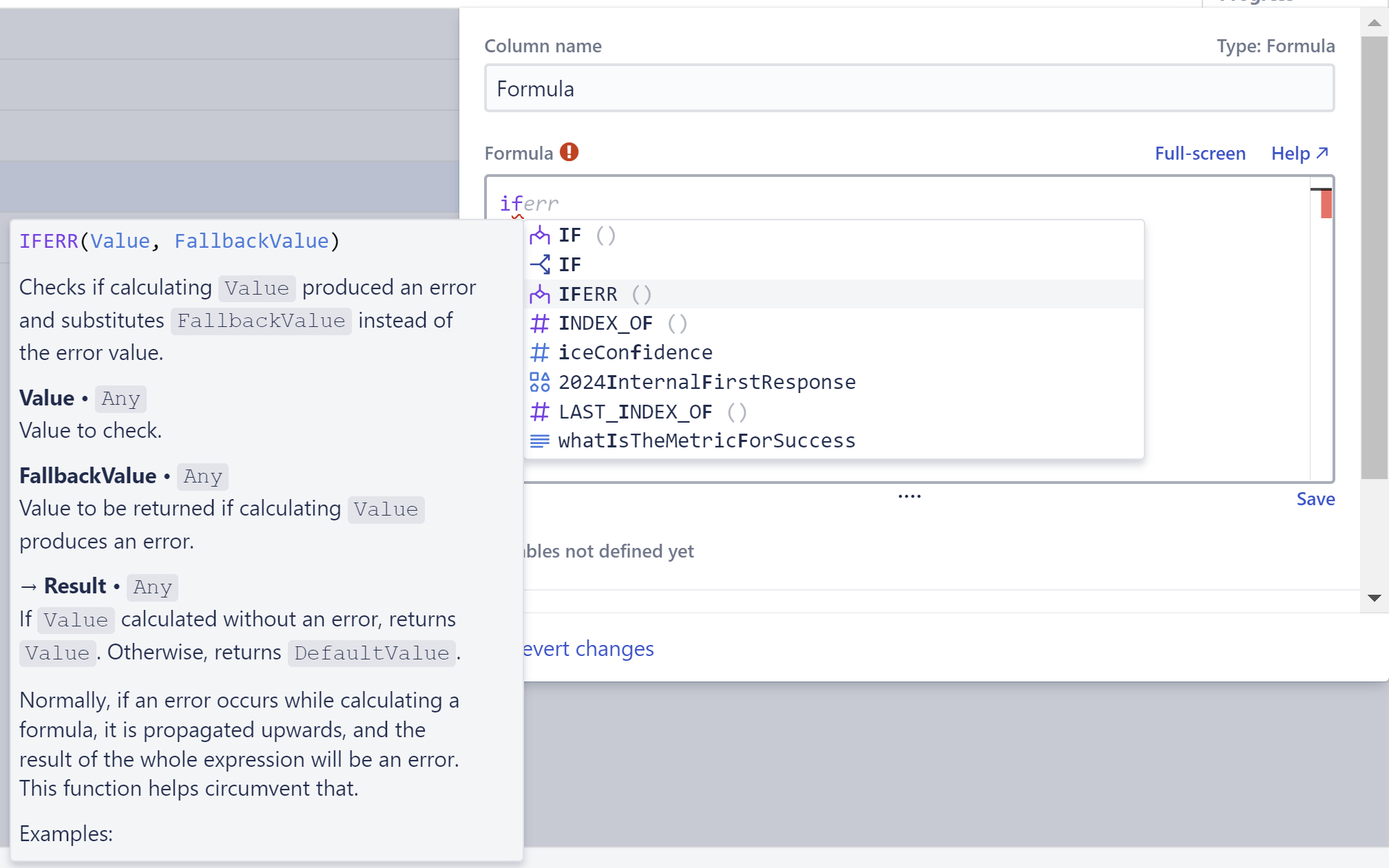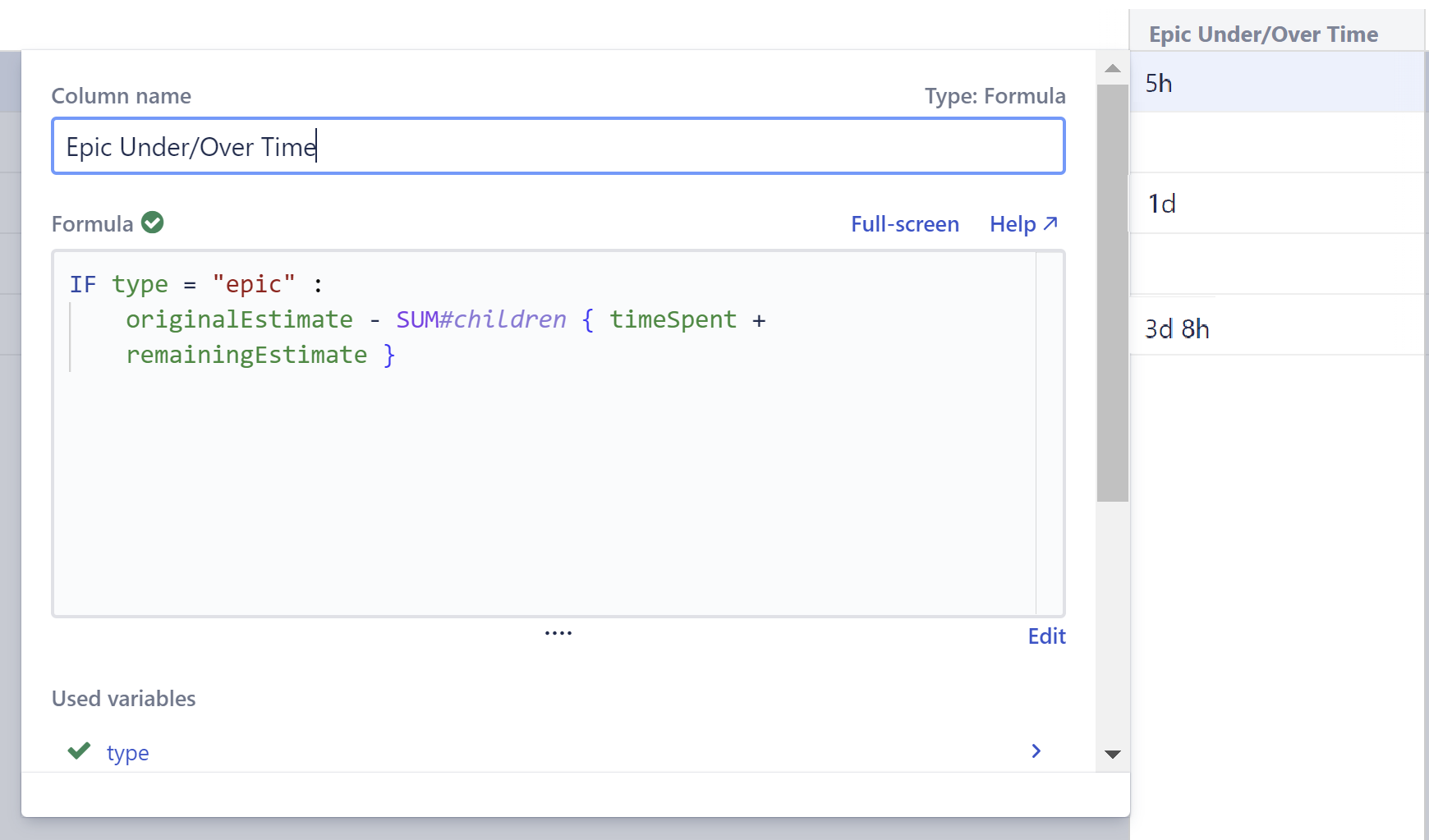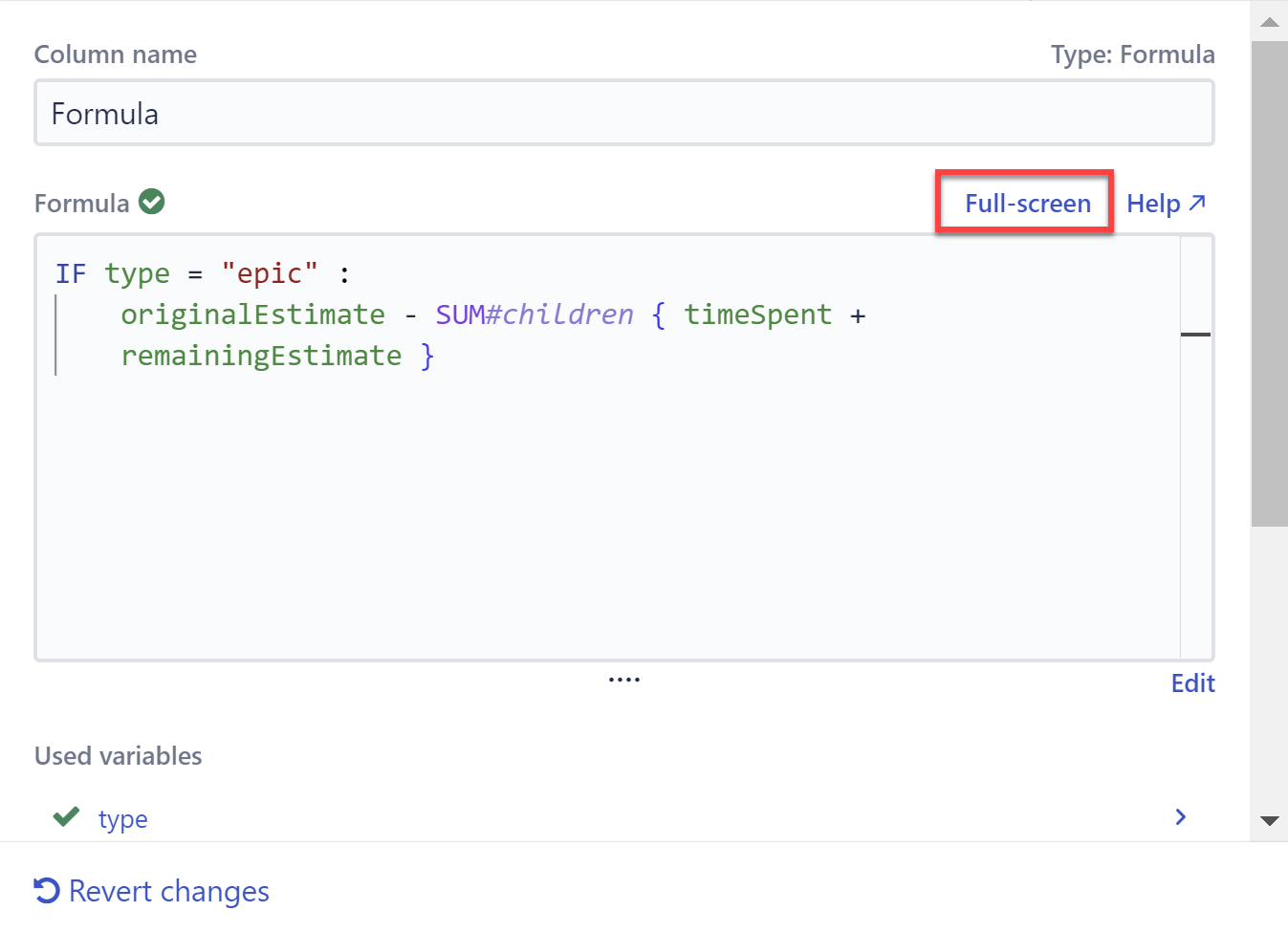
Using a Formula Column, you can perform calculations or comparisons based on issue fields or other attributes, and display those results in a column for each visible row in the structure.
The following guide will walk you through how to create a formula in a formula column:
Formulas should be constructed using the Expr Language, a simple language that supports variables, arithmetic operations, and functions. For a brief overview, see Expr Language.
When you're finished, click Save.

As you begin typing, the formula editor will suggest functions, modifiers, and variables. An explanation for each function will also appear, describing what it does and how to use it. To scroll through the list of suggestions and learn more about another item, use the up and down arrow keys.

You can also hover over the code already in your formula to see how it works. |
When you click Save, Structure will review your formula, attempt to link your variables to issue fields or other attributes and notify you of any errors. If the formula is ready to be used, a green mark is displayed. If it's not, the problematic parts are highlighted in the formula editor with red color.

If there are no issues, you're done! The results will appear next to the editor.
The example above is a simple formula to calculate whether or not we're on target to complete each epic on time:
In case you're not yet fluent in Expr, we're telling Structure to:
|
Formula errors are typically due to one of the following:
In some cases, the formula may pass inspection, but the results aren't what you expected. You may simply need to edit your variables, options or format; or you may need to revise the formula itself by clicking the Edit button.
The initial sizing for the formula editor is rather small. If you need more space, click Full-Screen to expand the window.
